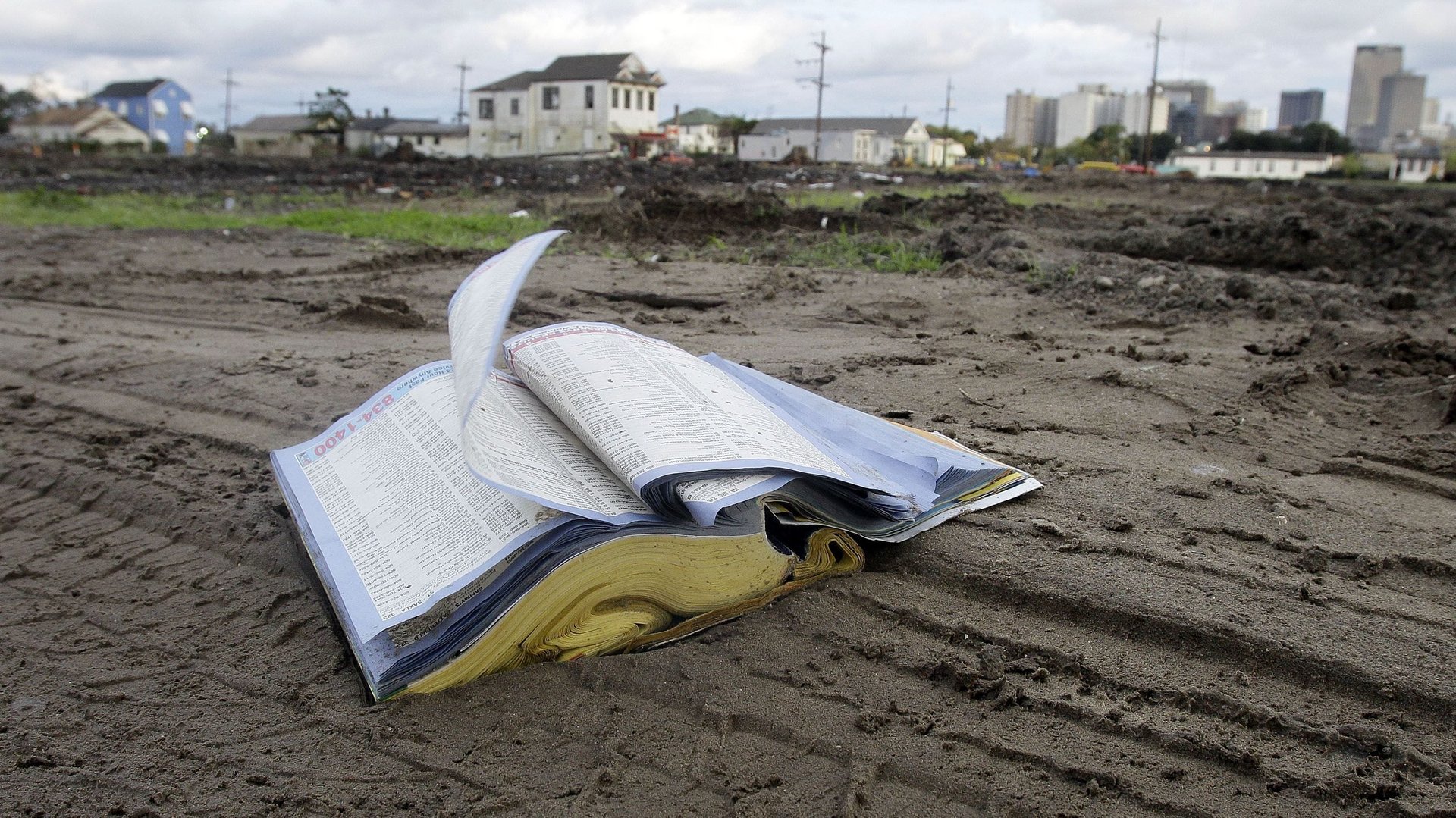Digital advertising is feasting on the corpse of the US yellow pages
Remember the yellow pages? The inches-thick phone books of local businesses left on doorsteps before the days of Craigslist and Angie’s List? Don’t worry, it appears many advertisers have forgotten, too.


Remember the yellow pages? The inches-thick phone books of local businesses left on doorsteps before the days of Craigslist and Angie’s List? Don’t worry, it appears many advertisers have forgotten, too.
After years as the darling of Madison Avenue, digital advertising is finally expected to surpass spending on TV, radio, billboards, print, and other traditional media formats in the US this year. Spending on digital advertising will rise to around $129 billion, while traditional advertising slumps to $109 billion, predicts research firm eMarketer.
Big declines in ad spending on directories like the yellow pages are tipping the scales—they are expected to bring in 19% fewer ad dollars in the US this year than last year, eMarketer estimates—alongside boosted spending on online platforms like Amazon.
Other print formats—excluding their digital outposts—are expected to take an 18% hit. The company makes estimates and forecasts based on its analysis of data from research firms, government agencies, media firms, and public companies, as well as interviews with publishers, ad buyers, and agencies.
In the US, “yellow pages” are created and printed by various publishers, unlike in some other countries such as the UK where the term is trademarked. However, many people no longer receive the print phone book. People in the US can opt out of getting the yellow pages through a website run by two trade groups, the Local Search Association and Association of Directory Publishers. In 2016, 40% of people in the US still consulted phone books at least once per year and print business directories were still a $3 billion business in the country, the Wall Street Journal reported (paywall). Other countries have stopped printing their directories—the UK Yellow Pages ended its 51-year print run in January.
Overall, the share of spending on traditional media ads in the US such as print, billboards, and non-digital TV and radio, will drop to 46% in 2019, from 51% last year.
Advertisers are moving those dollars online, where most US consumers now are. Google and Facebook together bring in nearly 60% of all US spending on digital ads, or ads that appear on desktop, laptop, tablet, mobile, and other-interconnected devices. Facebook is expecting to continue flourishing in 2019 thanks to Instagram, while Google will see minor declines. Amazon, which overtook Microsoft in 2018 as the third biggest ad publisher in the US, will see the biggest gains with a 50% increase in its US digital ad business.